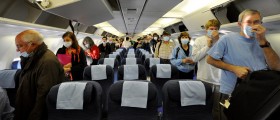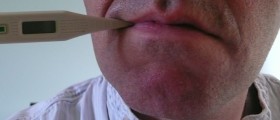
Influenza A, also known as H1N1, is a virus subtype of influenza A virus. Some strains of H1N1 are endemic in humans and cause a small fraction of all influenza-like illness and a small fraction of all seasonal influenza. In June 2009, the World Health Organization declared the new strain of swine-origin H1N1, known as the “swine flu” as a pandemic. It is estimated that the swine flu pandemic caused 17.000 deaths worldwide. Swine flu is common throughout pig populations and typically, transmission from pigs to humans results only in production of antibodies in the body. However, in some cases the transmission can cause human influenza.
H1N1 incubation period
The swine flu virus spreads just like any other flu virus, when an infected person sneezes or coughs. Microscopic droplets from cough and sneeze may even travel about 6 feet until they become inhaled by another person. The virus can be contracted by touching a surface or object with flu viruses on it. The virus normally enters the body through nose, eyes or mucous membranes in the mouth. When a healthy person gets in touch with the virus, the incubation period begins. The average incubation period for H1N1 virus is somewhere between 1 and 7 days. The patient is most likely to develop first symptoms of the disease between the first and fourth day after being exposed to the virus. Patients are contagious for about 7 days after they first begin to show the symptoms of influenza. The symptoms normally last for 7 days, but the person is considered to be contagious for as long as it shows the symptoms of swine flu. Children are normally contagious for longer periods of time. Adults of 65 years of age and older, pregnant women and people with compromised immune system, are considered to be at drastically higher risk of contracting the virus.
Signs and symptoms of H1N1 infection
Most of the patients with H1N1 infection have mild symptoms and do not require any kind of special medical treatment. They will probably use standard antiviral drugs and therapies normally used for seasonal flu. The first symptoms of H1N1 infection may include fever, but not everyone with flu will have a fever. Fever, characterized by an elevation of temperature above the normal range of 36.5–37.5 °C is one of the body's immune responses and attempts to neutralize a viral infection. In some patients this immune response will fail and they will experience only the other symptoms such as cough, sore throat, runny or stuffy nose, body aches, headache, chills, fatigue, and possibly diarrhea or vomiting.

















Your thoughts on this
Loading...